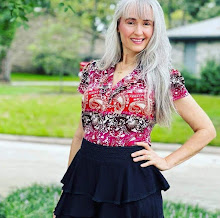Even a small thing like a hand sewing needle has had a role in the history of humans. Some facts and history about the hand sewing needle:
The first sewing needles were made from bone and were used to sew animal hides together. The oldest known bone sewing needle was one found in what is now southwestern France and has been estimated to be over 25,000 years old.
Needles made from copper, silver and bronze were used in ancient Egypt.
The oldest iron needle known was found in what is now Germany, and dates back to the 3rd century B.C.E.
Bookbinders and shoemakers used needles made from hog bristles in the Middle Ages.
Native Americans used porcupine quills and the pointed end of agave leaves for sewing needles. The fibers of the agave leaf were also used for thread.
Metal needle making was perfected by Muslims in Spain in the 11th century. Spanish Muslims were some of the most knowledgeable medical doctors in the world at the time, and had perfected many surgical techniques that required needles for suturing.
When the Muslims were driven out of Spain in the 15th century, they took the knowledge of needle making with them to Arab lands. Muslims returned to needle making, and Arab traders took them to Europe.
Europe learned the art of needle making from Arab needle makers, and it came to England in the 17th century. Before this time, metal needles were made in Europe by the local blacksmith, and resulted in very crude needles.
The knowledge of needle making was also used to make fish hooks in England. The country became well known for high quality fish hooks as well as sewing needles in the middle of the 17th century.
Metal needles were handcrafted before the industrial age. The process began with cutting wire long enough to make two needles. Then points were ground on either end of the wire, the wire was flattened in the middle and eyes punched out. The needles were then separated. This operation is still followed today, but machines now do the work instead of humans.
Around 1850 needle making machines began producing needles and turned needle making from a cottage industry into an industry done in factories. By 1866 there were 100 million needles being made in England a year.
The English town and district of Redditch in central England became the center of the world's needle production in the 19th century. The craftsmanship of the needles made there was so great that a foreign manufacturer sent a hypodermic needle to Redditch claiming that it was smaller than Redditch needle makers could produce. The needle was sent back to the manufacturer with a needle made by Redditch craftsman so small that it fit inside the foreign manufacturer's!
Needle making is still being done in the Redditch area and other places in England.
Alan Beggerow is a free lance writer. Visit his writing services website, Ghostwriter, at http://www.ghostwriterboo.blogspot.com/
Article Source: http://EzineArticles.com/?expert=Alan_Beggerow http://EzineArticles.com/?The-Hand-Sewing-Needle---History-and-Facts&id=1009010
















































.JPG)




I love sewing and I love history your blog is so intriguing for me. Everytime I read another one of your posts I learn another interesting fact.
ReplyDelete♥Darla
http://retroways.blogspot.com/
I plan to post more history-related articles in my blog; so stay tuned. I will post something in my blog every day to keep it interesting and exciting.
ReplyDeletewhen and where did needles start being make in the USA? thanks Sandra
ReplyDeletedo you know anything about Kabecom/war pack sharps hand-sewing needles? I'm wondering if they were given to soldiers in WW1 or WW11? these needles were made in England superior quality needles.
ReplyDeletethanks for any info. Donna
It's fascinating to learn about the evolution of sewing needles throughout history.
ReplyDelete